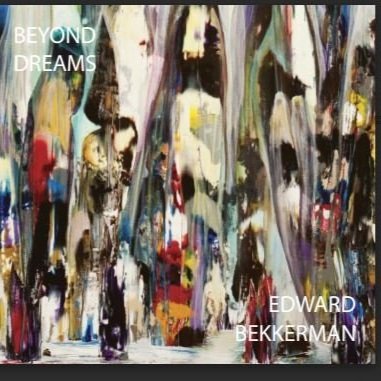Essays

Labyrinths of Love, "About the Work of Edward Bekkerman," Prof. Dr. Irene Daum, Düsseldorf, 2022, pp. 13-15
“As an artist, Edward Bekkerman is interested in the primal, archaic, invisible. His inspiration comes from the spiritual, an openness to experience and an intense preoccupation with the power of symbols. His works are not a window on reality, they reflect a subjective experience with all senses. His art represents a visual world whose exploration invites reflection and inspires the viewer's imagination and fantasy.”
— Prof. Dr. Irene Daum
Editor Journal www.wissenschaft-kunst.de

Heaven, "The Energy of Overcoming," Alexander Borovsky, Head of the Department of Contemporary Art, Russian Museum, pp. 5-9
As a creative personality, Edward Bekkerman has developed along the lines of classical modernism. He creates and inhabits his own world. He does not regard matters of self-expression as an excuse for irony. He does not ask the public to play along with him or solve intellectual crosswords; what he demands is fully-fledged emotional contact. Even in his behavior, he adheres to the mythology of modernism (which the classics of modernism have themselves already broken, appearing in the role of newsmakers). He is a solitary artist, an individualist far removed from the professional environment and little concerned about public relations or his relationship with the establishment. While such a stance might be regarded as archaic, experience shows that it always incorporates great potential topicality. In Bekkerman’s case, it is wholly natural. His art is foreordained to be understood.
— Alexander D. Borovsky
Head of the Department of Contemporary Art
State Russian Museum, St. Petersburg

Labyrinths of Love, "Artist, Edward Bekkerman, Labyrinths of Love," Phoebe Hoban
“All that is solid melts into air,” in the ephemeral world of Edward Bekkerman’s “Dream” and “Spirit” paintings, abstract-looking images that are in fact as richly and minutely detailed as an illuminated manuscript penned by a Medieval monk. Rather than the common interpretation of this phrase made famous by Marx—which continues, “all that is holy is profaned” —Bekkerman’s work expresses precisely the opposite, discovering the mystical in the otherwise ordinary, transmogrifying superficial reality into a spirit world.
— Phoebe Hoban is a New York-based writer who covers art and culture for a variety of publications. Her biography of the artist Alice Neel, Alice Neel: The Art of Not Sitting Pretty, was published by St. Martin’s Press in December, 2010. Her biography of Jean-Michel Basquiat, Basquiat: A Quick Killing in Art, was published by Viking/Penguin in 1998. Her biography of Lucian Freud, Lucian Freud: Eyes Wide Open, was published by Amazon and Houghton Mifflin (New Harvest) in 2014

Labyrinths of Love, "Paths of The Enigmatic," Tayfun Belgin, Director, Osthaus Museum Hagen
“The Osthaus Museum Hagen considers itself fortunate to present a solo exhibition of the important New York painter, Edward Bekkermann in its rooms…Today we have the good fortune that an American institution has supported us with great effort in this exhibition, for which we are of course very grateful. All works were shipped from New York to Hagen, both cities belong to different continents.”
— Tayfun Belgin
Director , Osthaus Museum Hagen

Beyond Dreams, "The Paintings of Edward Bekkerman," Jonathan Goodman, Art Critic, Professor at Prague University
The paintings of Edward Bekkerman maintain an interiority whose vertical forms, are at once abstract and strangely human. Bekkerman offers his audience these presences as a means of communicating with an ethereal world in which the shapes of angels and people seem to have been merged into a single gestalt.
— Jonathan Goodman
Art critic, professor at Prague University,
professor at Parsons The New School For Design

Beyond Dreams, "The Transmogrification of All That is Solid Melts into Air," Phoebe Hoban, pp. 14-15
Bekkerman has described his state while painting the series as trance-like. But although the artist has discovered a powerful conduit to his own subconscious, the process of getting the images he senses and imagines onto the canvas requires great skill. Blending both abstract and figurative imagery, Bekkerman weaves his dream-like images in and out of the foreground and background of the paintings, so that the narrative unfurls like a winding road through a lushly overgrown forest.
At first glance, the canvases appear to be made up of purely abstract striations, akin to a dripping candle’s tangled tallow, or the streaks of raindrops on a windowpane. But upon closer examination, an entire world of mysterious entities emerges, quite specific in its intent. It’s a little like watching an apparently random cloud formation and seeing faces or figures emerge.

Beyond Dreams, "The Art of Edward Bekkerman" Alexander D. Borovsky, pp.10-11
As a creative personality, Edward Bekkerman has developed along the lines of classical modernism. He creates and inhabits his own world. He does not regard matters of self-expression as an excuse for irony. He does not ask the public to play along with him or solve intellectual crosswords; what he demands is fully-fledged emotional contact. Even in his behavior, he adheres to the mythology of modernism (which the classics of modernism have themselves already broken, appearing in the role of newsmakers). He is a solitary artist, an individualist far removed from the professional environment and little concerned about public relations or his relationship with the establishment. While such a stance might be regarded as archaic, experience shows that it always incorporates great potential topicality. In Bekkerman’s case, it is wholly natural. His art is foreordained to be understood.